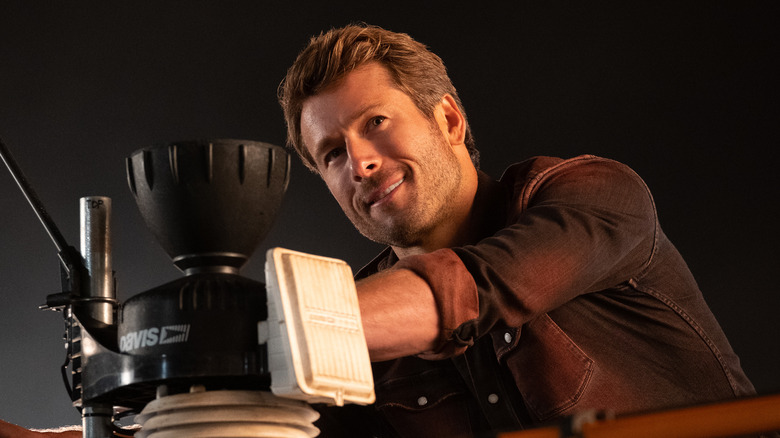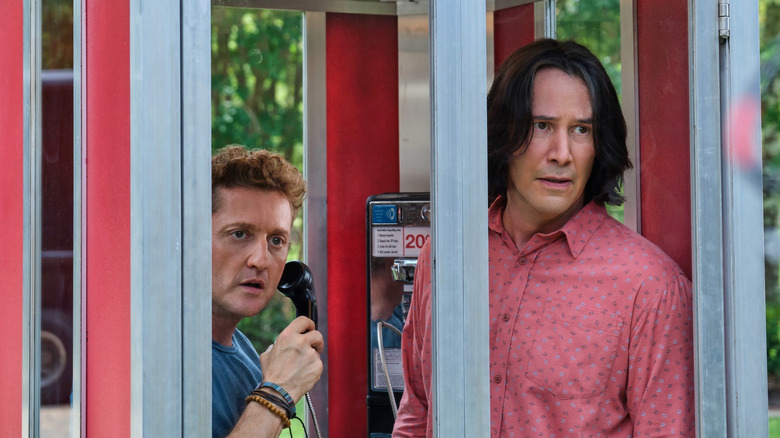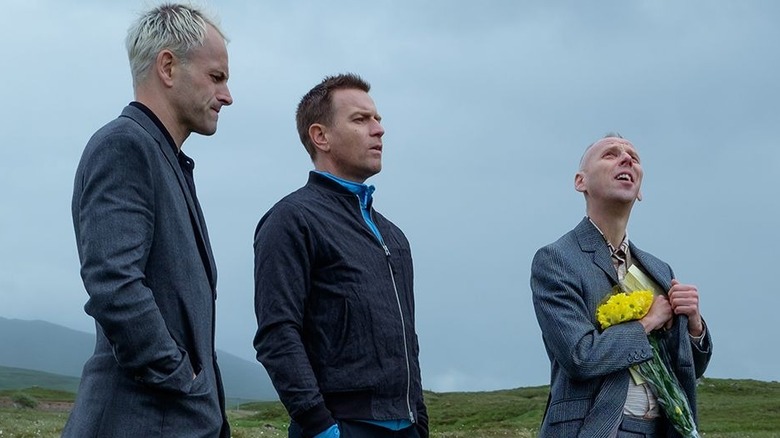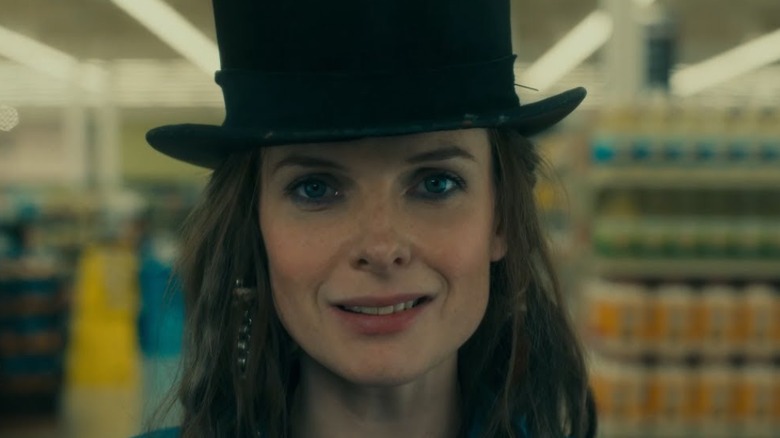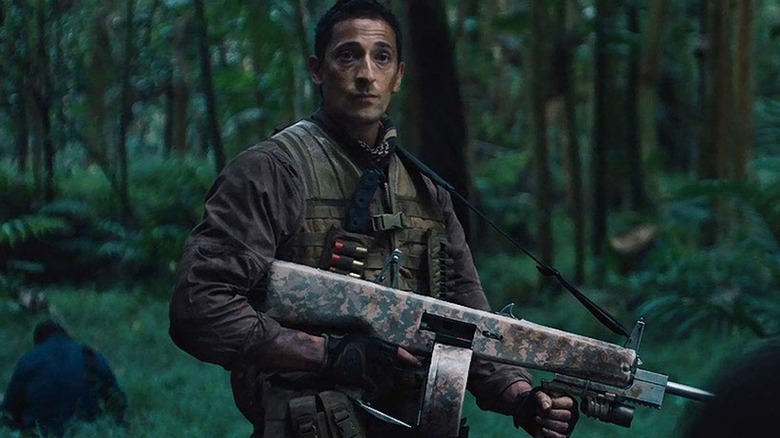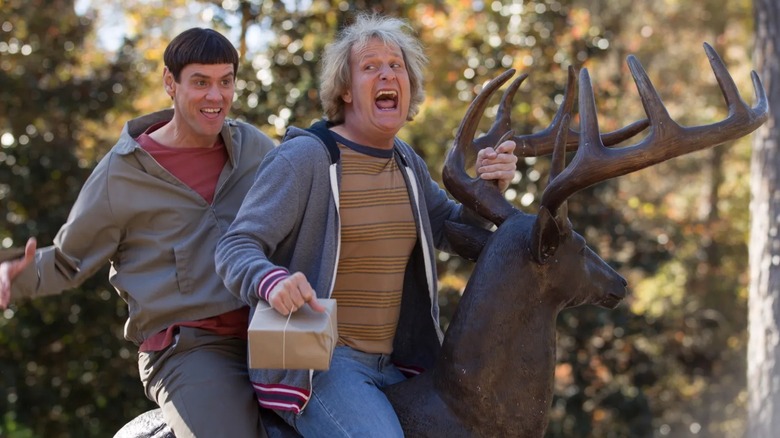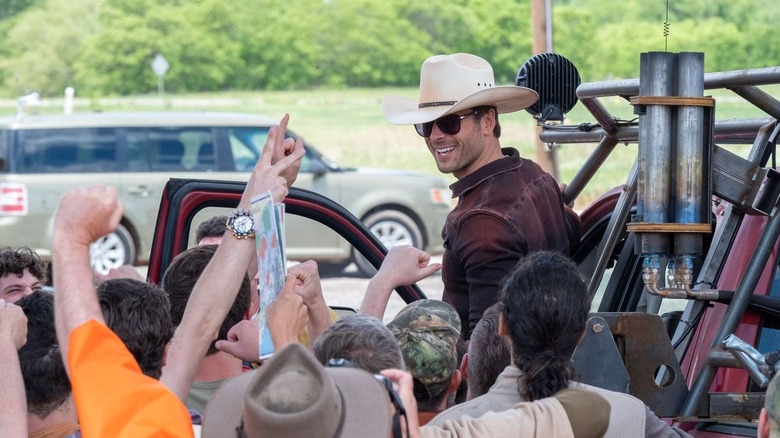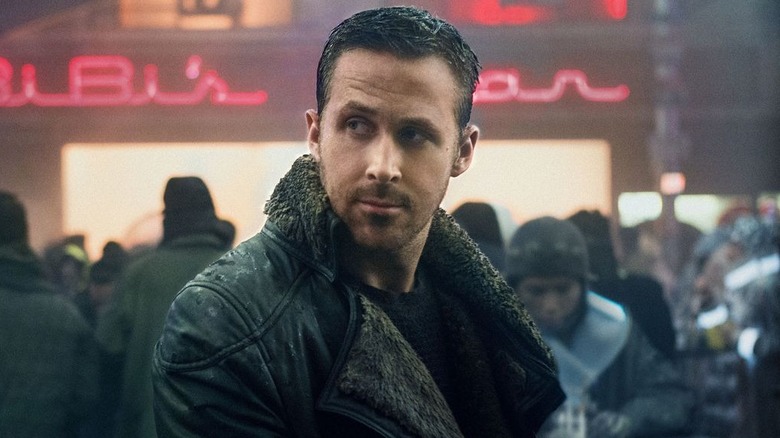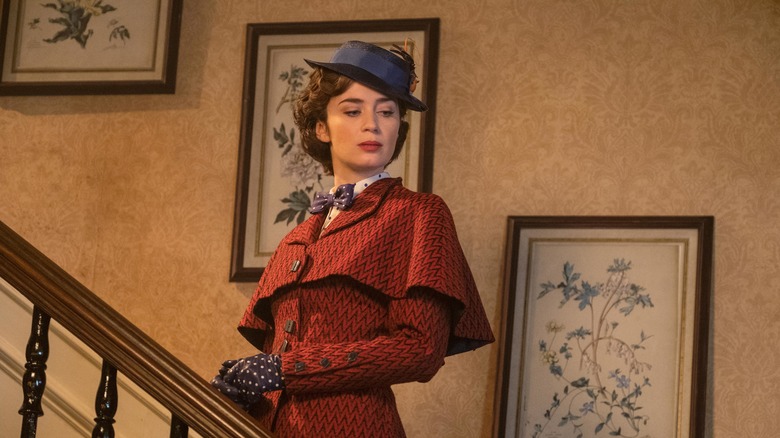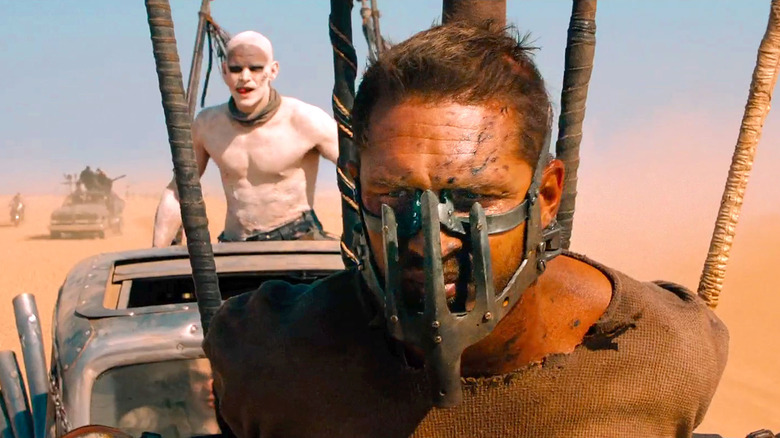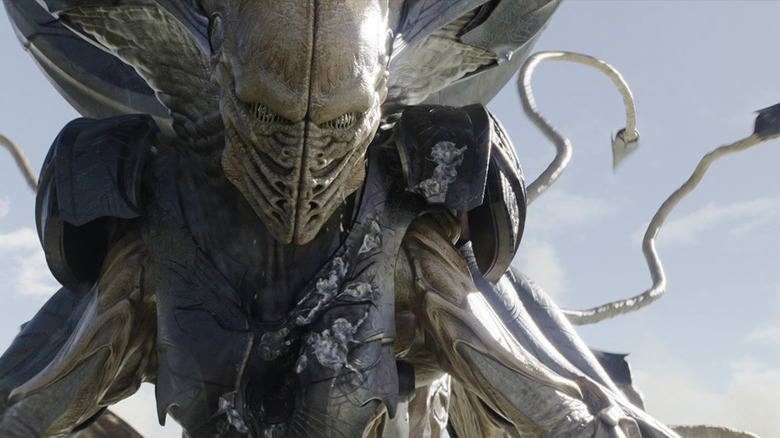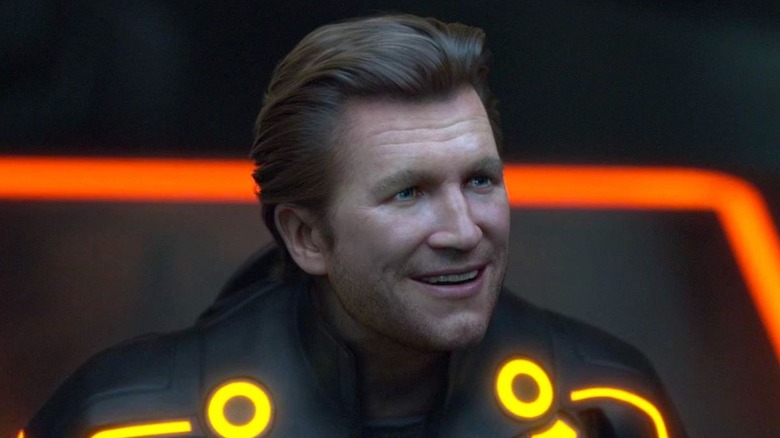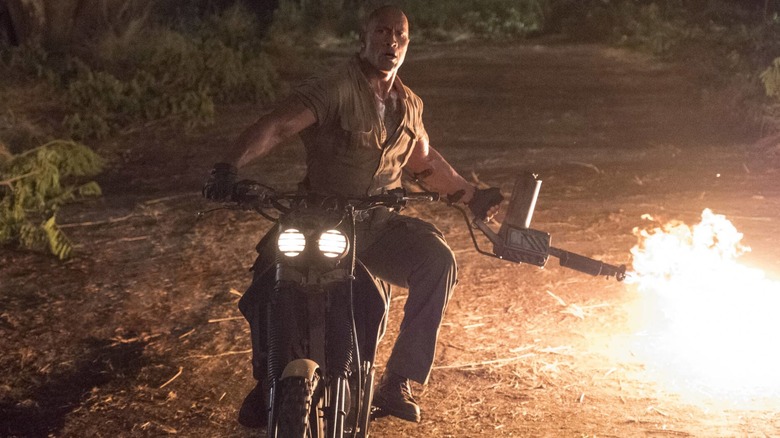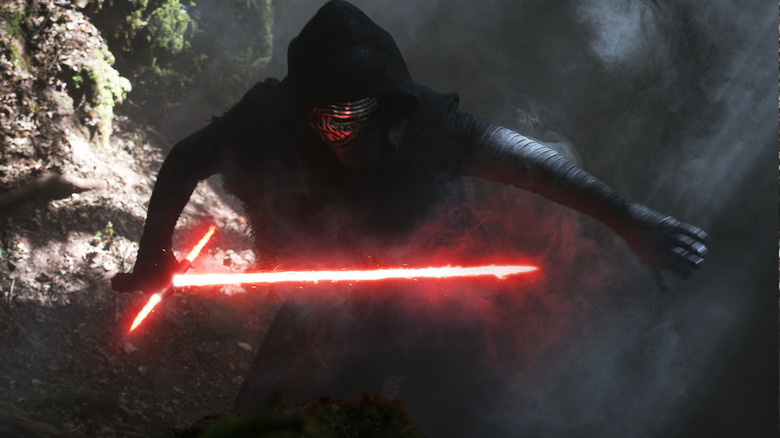Movies That Took Over 20 Years For A Sequel, Ranked By Box Office
Hollywood runs on a pretty simple formula: "Movie makes money" means "movie gets sequel." It's simple in theory, not so much in execution, which is why some franchises end up with gaps of time so large that a child could have been born, start driving, graduate from high school, and begin their junior year of college between films. Why the wait?
Sometimes it's about actors' or directors' egos. Other times, it's trying to get the story just right (yeah, sure it is). But most of the time, it's because the original star has hit a downward slide and needs the check, and/or the studio stopped making bank on their other properties. New franchise no longer earning a profit? Go back to the vault and try to capitalize on the sweet nectar of nostalgia!
Is it worth it? Sometimes. The most memorable legacy sequels can be pretty good (and make money too), while the worst ... well, let's just say there are plenty of examples in which the series should have stayed dead. These movie franchises took more than 20 years for a sequel to appear — and how much money they made at the box office gives us a hint of whether audiences thought they were worth the wait or not.
14. Bill and Ted Face The Music
"Bill and Ted Face The Music" turned out to be a pretty prescient title, though perhaps "Bill and Ted Face The Firing Squad" would have been more appropriate. In the late 2010s, Keanu Reeves had an unexpected comeback (which perhaps we should call the "Reeves-assaince"?). He was christened "the internet's boyfriend," driven largely by his reputation as a cool dude, and he achieved newfound success playing a stone-cold, pistol-slinging professional hitman named John Wick who was bent on avenging his dead dog.
Given his success with the "John Wick" franchise, it seemed sensible to bring back two of Reeves' other most famous characters: Ted from the "Bill and Ted" franchise, and Neo from "The Matrix" series. "Bill and Ted Face The Music" took almost 30 years to hit the screen, finally doing so in 2020, which was pretty much the worst time to release a movie. Yet, even grading on a COVID curve, its $6.2 million worldwide box office gross was less than excellent.
13. T2: Trainspotting
If a pitch-black comedy about a group of heroin addicts in an economically depressed area of Edinburgh, Scotland sounds like a good time at the movies to you, you're not alone. Director Danny Boyle's sophomore outing, "Trainspotting," cost a minor $3.1 million to make, but scooped up an astoundingly profitable $71 million at the worldwide box office. Guess the '90s were just a weird time, or moviegoers were more adventurous in their filmgoing diets.
Either way, Boyle would go on to other projects, including Oscar glory for "Slumdog Millionaire," while the film's star, Ewan McGregor, would fade into obscurity in little-seen indie dramas like the "Star Wars" prequels. We kid, we kid. Point being, the dudes were busy — too busy for hard drugs, or at least for another movie about hard drugs.
Some 21 years passed before "T2: Judgment Day," er, sorry, "T2: Trainspotting," which reunited the gang for another round. Results were ... mixed. "T2: Trainspotting" earned solid, if unspectacular reviews, while the film's $42 million worldwide was almost $30 million less than the original, despite three decades of inflation and six times the budget.
12. Doctor Sleep
Stanley Kubrick's "The Shining" is an all-time horror classic, universally praised by pretty much everyone besides its source material's author. Stephen King has let the world know how he really felt about it for four decades. Spoiler alert: He hated it. Well, despite hating the film version of "The Shining," King wrote a sequel to the book called "Doctor Sleep." Hollywood then decided to use that book as source material for a sequel to the movie King hated. Got that?
So yes, "Doctor Sleep" is both a sequel to the movie King didn't like and an adaptation of the book. Yes, it's convoluted, but that's showbiz. It was also a bit too much for moviegoers, as "Doctor Sleep" put the box office to sleep, with an anemic $71 million worldwide on a relatively modest $45 million budget.
Nearly 40 years earlier, "The Shining" grossed $46 million worldwide on a $19 million budget, which would be more than $140 million in 2019, the year "Doctor Sleep" came out. Maybe it was a mistake to make "Doctor Sleep" instead of remaking "The Shining," especially considering King's "It" franchise netted more than $1 billion worldwide.
11. Predators
The original 1987 "Predator" is about as good as '80s action movies get, and not just because it has some of Arnold Schwarzenegger's most famous movie one-liners. Deftly blending Arnie's one-man-army act with slasher horror elements and screenwriter Shane Black's deft wit, "Predator" earned $98 million worldwide on a $18 million price tag, most of which we assume was spent on Schwarzenegger's cigar budget.
The cleverly titled sequel, "Predator 2," doubled the original's budget at $35 million, but replaced Schwarzenegger and Carl Weathers with Danny Glover and Gary Busey (a buddy comedy we never knew we needed). The lack of star power earned "Predator 2" a so-so $54 million worldwide in 1990, thus putting the Predator's solo adventures on the backburner for 20 years. However, the character did stay in the cinematic consciousness thanks to the $300 million-earning "Alien vs. Predator" spinoff franchise.
The Predator was back on the big screen by himself, kinda, with 2010's "Predators," which sent our hapless anti-heroes to a planet populated by Predators. The film earned a darn fine $127 million on a $40 million budget, though it would be another eight years before we got a sequel. "The Predator" earned a franchise-high $159 million in 2018, but cost a massive $88 million, sending the character to streaming with 2022's well-received "Prey."
10. Dumb and Dumber To
With a string of 1990s comedy classics, Jim Carrey is one of those actors we'd always like to see reprise their most famous roles. But Carrey doesn't like playing the same part twice — or at least he didn't use to, before his declining star power made him more amenable to returning to at least one of those roles.
Case in point, the "Dumb and Dumber" series. The 1994 original concluded an historic year for Carrey, following "Ace Ventura: Pet Detective" and "The Mask," an unprecedented triple threat which turned the former "In Living Colour" ensemble member into Hollywood's highest-paid actor. Given "Dumb and Dumber" made $246 million worldwide on a $16 million budget, making a sequel seemed smart and smarter. But $16 million would no longer cover Carrey's salary alone, and besides, he wasn't interested.
So instead the series went with a prequel nobody asked for, 2003's "Dumb and Dumberer: When Harry Met Lloyd." Starring neither Carrey nor Jeff Daniels, the much-maligned comedy made $28 million worldwide, about 1/10th the original. Eleven years later, and 20 years since the original, Carrey and Daniels were back for "Dumb and Dumber To," which made $156 million in 2014.
9. Twisters
Sometimes a cynical cash grab is exactly what the moviegoing world wants. Take the "Twister" franchise, for example. "Twister" was powered by its all-star production team of director Jan de Bont (director of "Speed"), co-screenwriter Michael Crichton ("Jurassic Park" author), and producer Steven Spielberg (do we even need to list his credits?), as well as the promise of massive destruction and even a flying cow. Throw in A-list supporting actor Bill Paxton and Helen Hunt (star of the hit sitcom "Mad About You") as the likable leads, and you have the perfect recipe for a smash.
And what a smash "Twister" was, roaring to $495 million worldwide and becoming the second-highest grossing film of 1996, behind "Independence Day." Yet like "Independence Day: Resurgence," the initial response to "Twisters" was "Really? Another one?" Does every hit 90s movie need a legacy sequel? What's next, a new "Face/Off" movie?
Turns out conventional wisdom was wrong, as moviegoers really did want to see another "Twister." The sequel opened 28 years later to an F5 on the box office scale, earning $81 million in its opening weekend (twice the original, sans inflation) and sitting at press time on a promising $221 million worldwide after just three weeks. There are many reasons why "Twisters" blew everyone away at the box office, but the biggest is that audiences were still into the franchise.
8. Blade Runner 2049
If you have spent any time online, you know that the internet really, really likes "Blade Runner." Just not enough to go see it. Or at least, not enough to inspire moviegoers who don't spend their life online to go see it. In the latest example of "the internet is not real life," Warner Brothers greenlit a sequel to "Blade Runner" in 2017 despite the fact the original bombed in 1982 with $39 million worldwide.
But hey, the original also developed a cult following, so rolling the dice on a sequel didn't seem like such a bad idea, right? Maybe it didn't, but spending $185 million on a sequel with a cast that included Ryan Gosling, a hit-or-miss movie star, and Harrison Ford, who hadn't had a hit without him wielding a blaster or bullwhip since "What Lies Beneath," was a head-scratching decision.
What was Warner Brothers thinking? We're not sure, but "Blade Runner 2049" ended up making $258 million worldwide. Not bad for a sequel to a 35-year-old box office bomb, but not the would-be blockbuster that the studio hoped for and the budget demanded.
7. Mary Poppins Returns
"Mary Poppins Returns" has the biggest timespan between sequels on our list, as the original opened in 1964, while the sequel came out in 2018 — more than half a century later. With a gap big enough to become a grandparent, Disney dropping dimes on a sequel seemed kinda risky. Did the bet pay off? Surprisingly, yeah.
"Mary Poppins Returns" had big shoes to fill. The 1964 original grossed $102 million, which would be more than one billion in today's dollars. What can we say — Julie Andrews' magical nanny was really popular back in the day. Luckily for "Mary Poppins Returns," the original has remained in the public consciousness over the past six decades, as each generation has shared it with the next.
With Emily Blunt taking over for Andrews, "Mary Poppins Returns" made $345 million on a $130 million budget. So maybe it wasn't as big of a hit as the original, but it was a far cry from Disney's biggest live-action failures.
6. Mad Max: Fury Road
"Mad Max: Fury Road" is considered one of the greatest action movies of all time, with 10 Oscar nominations (including Best Picture), and six wins. Still, it's easy to forget what a financial risk it was. The original "Mad Max" trilogy is a cult classic, but only the 1980 original, which earned $99 million worldwide, can be classified as a bona fide box office blockbuster. The next two films didn't earn half that.
Besides, while the series put Mel Gibson in the spotlight, it was "Lethal Weapon" that made him a star — and Gibson wasn't even in "Fury Road," as he was replaced as Max Rockatansky with Tom Hardy, a well-respected actor, but not exactly a bankable box office draw. A 30-years-later sequel to a cult film without the original star and a $150 million price tag? Give it up to Warner Brothers for the chutzpah.
The reward was worth the risk. Powered by incredible reviews, "Fury Road" sped away with $368 million worldwide — a decent profit, but not enough to think the "Mad Max" series was invincible. In 2024, Warner Brothers released a "Mad Max" movie without Mad Max. Not surprisingly, "Furiosa" crashed, earning $172 million worldwide on a $168 million budget.
5. Independence Day: Resurgence
"Jurassic World," the first "Jurassic Park" movie in 14 years, came in with "big dino energy" in summer 2015. It scored a $208 million opening, making it the biggest opening weekend record holder at the time, and stomped away with $1.6 billion worldwide. The filmmakers behind the long-awaited "Independence Day" sequel probably anticipated the same thing in 2016. Admittedly, they had reason to hope: 20 years earlier, "Independence Day" ruled summer 1996, making $817 million globally — more than $1.6 billion in today's dollars.
Spending $165 million on a legacy sequel ($50 million less than "Jurassic World") seemed sensible, especially since original filmmakers Roland Emmerich and Dean Devlin, plus stars Jeff Goldblum and Bill Pullman, were back. Alas, the audience wasn't. Rather than ride the wave of nostalgia, "Independence Day: Resurgence" crashed and burned with a $41 million opening (less than the original), and $384 million worldwide. What happened? "Resurgence" brought back the original stars, but not the star, Will Smith, who opted to do another film. Besides, "Independence Day" completed the story in 1996, proving "Resurgence" was nothing but a contrived, cynical cash grab — one that didn't make any cash.
4. Tron: Legacy
If studying the film industry has taught us one thing, it's that making an expensive sequel to a decades-old box office bomb that became a cult classic is a horrible idea 9/10 of the time. Well, it turns out that "Tron: Legacy" is kinda the 1/10 that worked. The original "Tron" tanked with $26 million worldwide on a $17 million budget in 1982. Yet, during the next three decades it developed a bit of a fanbase thanks to home video — at least enough to convince Disney it was smart to spend $200 million on a sequel 28 years later.
How did "Tron: Legacy" do? Meh. The 2010 film earned $399 million worldwide. Following the maxim that a movie must make 2 to 2.5 times its budget to be profitable in theaters, "Tron: Legacy" underperformed its expectations. Given it has been a decade and a half since that film, we suspect that the upcoming sequel "Tron: Ares," due out in October 2025, won't necessarily change this franchise's trajectory.
3. Jumanji: Welcome To The Jungle
A blockbuster movie star who used to be box office poison, Dwayne Johnson gained that reputation mostly because of the "Fast and Furious" franchise. But that series had already banked nearly a billion dollars before Johnson kicked it into high gear. For real proof of Johnson's star power, look to the "Jumanji" franchise.
The original "Jumanji" adapted a book into a special effects-heavy star vehicle for Robin Williams, earning $252 million worldwide on a $65 million budget in 1995. This was an era when not everything needed a sequel, so the studio left well enough alone until spinoff "Zathura" tanked with $58 million in 2005. Twelve years later the studio tried again, making "Jumanji: Welcome To The Jungle" for a modest $90 million and trading the board game-based family fantasy of the original for action-packed hijinks in a video game world to lure modern audiences.
It worked really well: "Welcome To The Jungle" earned just shy of a billion worldwide, taking in more money than both "Jumanji" and "Zathura" combined, times two, a feat repeated by 2019's "Jumanji: The Next Level."
2. Top Gun: Maverick
"Top Gun" is one of those movies that belongs in a 1980s time capsule. Even those who don't adore it with a jet-fueled passion can still acknowledge that it's earned a permanent place in America's pop culture canon next to "Back To The Future" and "E.T. The Extra Terrestrial." On a $15 million budget, "Top Gun" soared to $357 million worldwide, just over a billion dollars accounting for inflation, while topping "Crocodile Dundee" at the 1986 global box office (now where's that legacy sequel?).
The idea that a "Top Gun" follow-up could not only do just as well, but even better, sounded absurd. Well, Tom Cruise said "hold my control stick" and did just that. After years of COVID-related delays, "Top Gun: Maverick" opened to an insane $126 million — and didn't stop earning money thanks to its long legs (or should we say "wings?").
Bolstered by strong word-of-mouth, "Maverick" made $1.4 billion worldwide, way more than the original even accounting for inflation. It also earned six Oscar nominations, including Best Picture. "Maverick" not only topped "Top Gun," but left the original in its afterburners.
1. Star Wars: The Force Awakens
While "Star Wars" has largely turned into an increasingly divisive streaming franchise, there was a time once — in a galaxy far, far away — that it was the biggest and most beloved cinematic series of all time. Don't take our word for it, just look at the numbers: $10.3 billion worldwide for an average of $860 million per film, not accounting for inflation.
What happened? That's a subject for another article, but we can say for certain that after the commercially successful but critically underwhelming prequel series, fans were dying for a sequel to the original trilogy. It had been 32 years since Luke, Han, and Leia were all together on the big screen, and while we still never got to see that again (sigh), the potential was too good to pass up.
"Star Wars: The Force Awakens" opened to a then record-breaking $247 million worldwide, finishing its Kessel Run with just over $2 billion globally, the most of any entry in the franchise (sans inflation). It also became the fifth biggest earner worldwide, and remains the highest-grossing domestic film of all time. Whatever happened to the saga since, and wherever it is going next, there's no denying the Force was with "Star Wars" fans in 2015.
